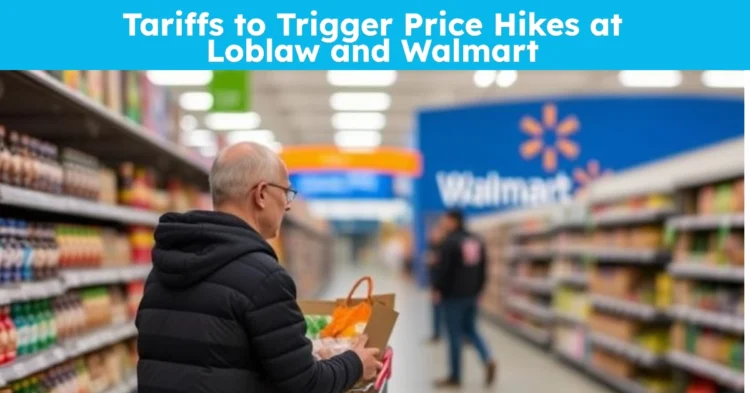Canadians are bracing for another round of rising grocery prices, as the impacts of the ongoing trade war between the U.S. and Canada begin to show up on store shelves. Major retailers like Loblaw and Walmart are warning that customers should expect to pay more for everyday essentials in the coming weeks and months as pre-tariff inventories run out and new shipments arrive under elevated duties.
Table of Contents
Loblaw Sounds the Alarm on Tariff-Driven Price Increases
Loblaw Companies Ltd., Canada’s largest grocery chain, has already marked over 1,000 items on its shelves as being impacted by tariffs. However, according to CEO Per Bank, that number is set to triple — and possibly reach over 6,000 in the next two months.
In a recent update, Bank explained that the current stock of goods imported before the tariff hike is being depleted. As this inventory is replaced by tariffed goods, consumers will see higher prices in key product categories such as:
- Pantry staples
- Health and beauty products
- Natural and organic foods
While these items represent a small fraction of Loblaw’s 80,000-product catalogue, the increase is expected to be significant enough for shoppers to notice at checkout.
Why Prices Are Climbing: Trade War Fallout
The root cause of the price hikes stems from ongoing tariff battles. In response to tariffs introduced by the U.S. government under President Donald Trump, Canada imposed counter-tariffs on various American goods earlier this year. While some relief measures were introduced in mid-April — such as suspending duties on U.S. ingredients used in Canadian food processing — tariffs still remain on key grocery items like:
- Orange juice
- Alcohol
- Pasta
- Packaged U.S. dairy and poultry
- Specialty imports (e.g., Wisconsin cheddar)
University of Guelph food economist Mike von Massow explained that the Canadian government targeted items that have Canadian-made alternatives to limit the impact, but shoppers looking for specific foreign products will feel the cost increase.
Walmart Also Set to Raise Prices in the U.S. — And It May Spill Into Canada
South of the border, Walmart has confirmed that it will raise prices in its U.S. stores due to tariff pressure. Though Walmart sources about two-thirds of its merchandise domestically, it still relies heavily on imports — especially from China — for general merchandise categories like electronics and toys.
Walmart CEO Doug McMillon acknowledged that while the company is absorbing some of the added costs, it cannot contain them all. Price increases began in April and are accelerating through May 2025. The impact is also being felt in grocery aisles, particularly in items imported from countries now affected by tariffs such as:
- Costa Rica (bananas)
- Peru (coffee and avocados)
- Colombia (flowers and produce)
McMillon noted that gradual price increases will continue through the summer, especially as retailers prepare for the back-to-school season.
Remote Communities to Feel the Pinch the Most
Gary Sands, vice-president of the Canadian Federation of Independent Grocers, highlighted that rural and remote communities may suffer the most from the price surges. These areas already face higher transportation and distribution costs, making the additional burden from tariffs even more difficult to manage.
What the Canadian Government Is Doing
While tariffs remain a point of tension, recent moves by Prime Minister Mark Carney’s government suggest a willingness to de-escalate. Canada has paused many of its counter-tariffs on food-related imports to reduce strain on both businesses and consumers.
Still, food manufacturers and grocers must work through complex supply chains. Even if tariffs don’t directly apply to certain items, they can create ripple effects through higher input costs and broader supply disruptions.
Bottom Line: What Shoppers Should Expect in Summer 2025
Whether you’re shopping at a Loblaw store in Canada or a Walmart in the U.S., be prepared for price tags to climb this summer. As old inventories are depleted and new, tariff-laden goods arrive, consumers should anticipate higher costs on a wide range of household products.
While government measures may eventually ease the pressure, shoppers should consider buying Canadian alternatives where possible, looking for sales, and stocking up on non-perishable items before additional waves of price increases take hold.

